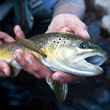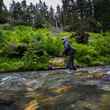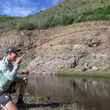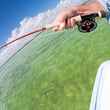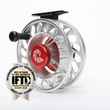To say that this year's photo contest has been our best might be considered to be saying a lot of nothing at all. After all, the site itself has only been around a little more than two years, and this year's photo contest is only our second annual. That said, by virtue of these contests, we've had the pleasure of hosting some of the finest fly fishing photography out there. Some of these photographs have been submitted by professionals, some by avid amateurs and some by everyday fishermen that have become accustomed to carrying a camera on the water with them whenever they go, with little more in terms of expectations that keeping a visual record of the experiences that drive them to the water each time they venture there.
Whether the camera is a $3,000 digital SLR, a point and shoot, a GoPro or a smartphone, the result is the capture of many stunning images which remind each of us why we seek out fish-filled waters. It is a privilege to host and showcase these images and it is no doubt a tradition we hope to carry on for years to come.






